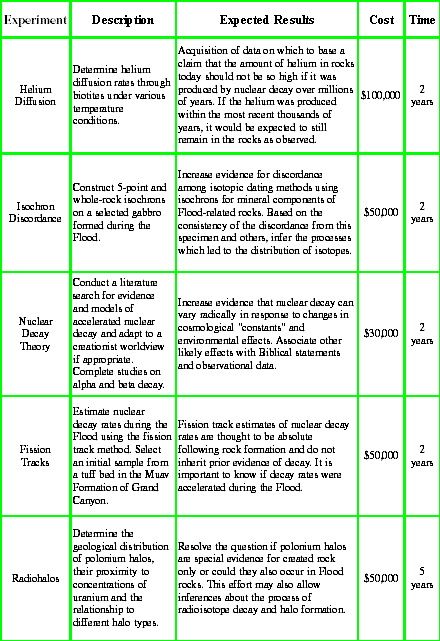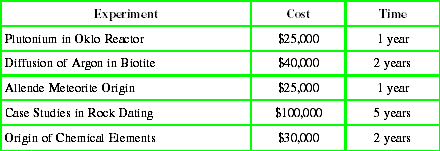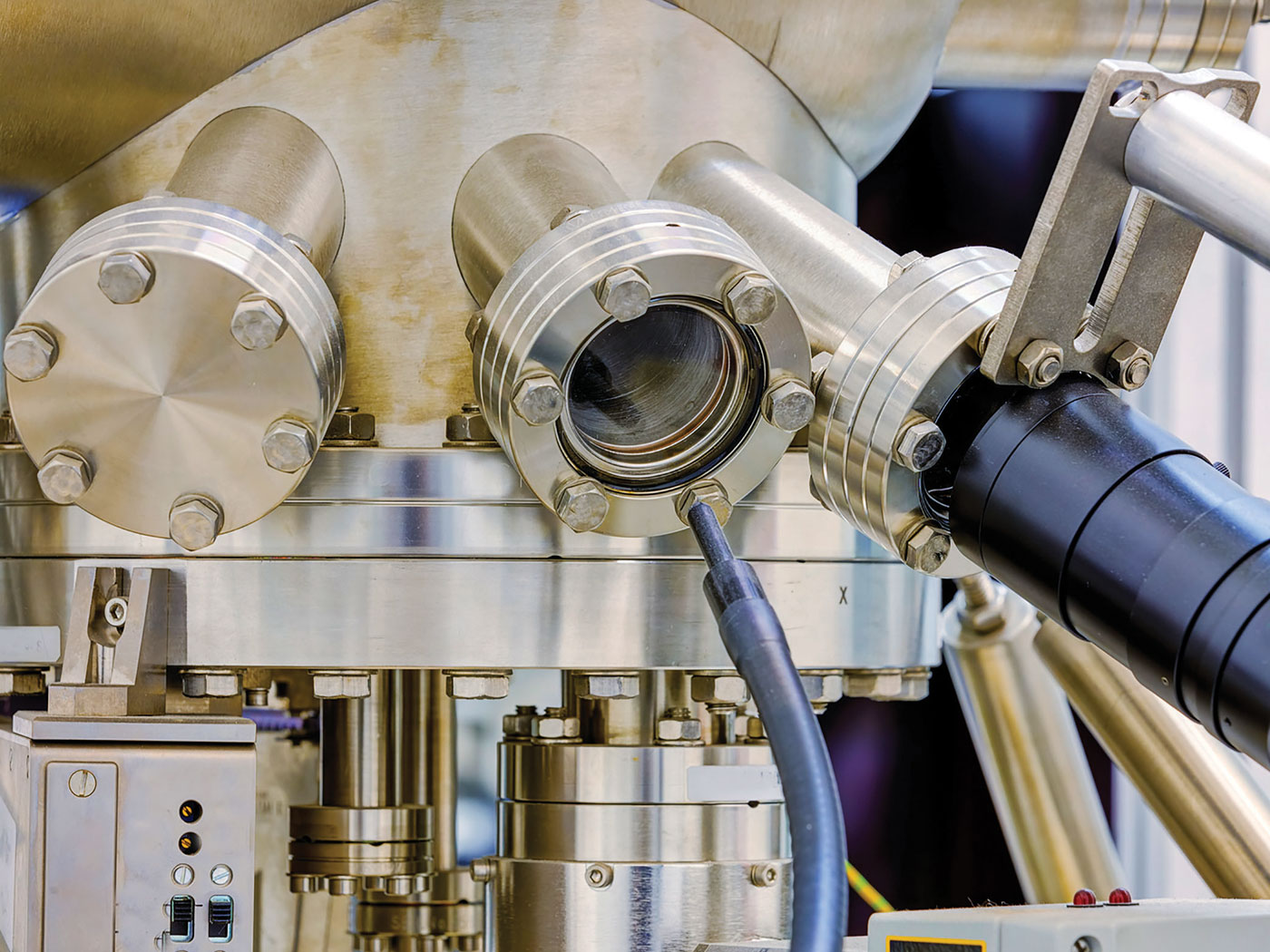Download a copy of the 2000 book: "Radioisotopes and the Age of the Earth — A Young-Earth Creationist Research Initiative" 2.8 MB PDF
Albuquerque Meeting
The research group studying Radioisotopes and the Age of the Earth (RATE) met on June 3 and 4 in Albuquerque, New Mexico, to receive the first draft of its Status Report on radioisotope dating to be published in 2000 and establish priorities on research projects. The six members of the RATE group met for the third time in three years to refine and develop this very important project. Dr. Larry Vardiman facilitated the meeting and will serve as chief editor of the upcoming report. Drs. Steve Austin of ICR, John Baumgardner of Los Alamos National Labs, Gene Chaffin of Bluefield College, Don DeYoung of Grace College, Russell Humphreys of Sandia National Labs, and Andrew Snelling of ICR contributed chapters to the upcoming book and suggested research projects for the five-year research program. The three leading creationist organizations, the Institute for Creation Research, the Creation Research Society, and Answers in Genesis were the initial sponsors of this consortium of scholars. Dr. John Morris, President of ICR, and Dr. David Boylan, member of the ICR technical advisory board, attended as observers by invitation.
Status Report
The RATE group continued its plans to publish a monograph entitled, Radioisotope Dating from a Young-Earth Creationist Perspective: Status Report and Research Plan. It is expected to contain eight chapters reporting on such topics as: Introduction, A Review of Radioisotope Dating, Radioisotope Distributions in the Earth, Discordant Estimates of Radioisotope Dates, Nuclear Decay: Theoretical and Observed, Geochemical Processes in the Mantle and Crust, Accelerated Nuclear Decay and Helium Flux, and Radiohalos. Drafts of each of the chapters for this book will be reviewed during the fall of 1999 and a second draft received for final editing in the spring of 2000. After a final review by the authors at the next RATE meeting in June of 2000, the book is planned for release in the fall. The purpose of the monograph is to provide a benchmark on radioisotope dating and lay out a five-year plan for research.
Research Plan
Part of the report in 2000 will be a five-year plan for research to explain the apparent disparity between conventional and Biblical dates. At the Albuquerque meeting a full day was devoted to the discussion of suggested research projects. Ten research projects were offered by the RATE group which are designed to resolve various issues or answer questions about how nuclear decay has occurred. The basic question which is addressed in most of these research projects is: How did the large amounts of daughter products get in the rocks and minerals? Both old earth and young earth views find anomalously high levels of daughter material, but the answer to this question is crucial to a proper understanding.
It appears that much larger quantities of nuclear decay may have occurred than would be expected for 6,000 (or so) years of radioactivity at the currently observed rate. The evidence for this concern stems from (1) the presence of daughter isotopes along the entire decay chain in proximity to parent isotopes, (2) visible scars (halos) from alpha decay, (3) the presence of the alpha particles themselves (helium nuclei) still within the rock where they were apparently formed by nuclear decay, (4) visible tracks from decay by fission, and (5) residual heat produced by nuclear decay in proximity to high uranium concentrations.
It is hypothesized by the RATE group that at some time in the past a much higher rate of radioisotope decay may have occurred leading to the production of large quantities of daughter products in a short period of time. It has been suggested that this increased decay rate could have been part of the rock-forming processes on the early earth and/or one of the results of God's judgments upon man following the Creation, i.e., the curse or during the Flood.
The amount of decay products which should exist, given the conventional old-earth model, differs from that expected by the young-earth creationist model in some cases by over five orders of magnitude (i.e., 100,000 times). The RATE group believes this large difference may make it possible to validate a true model of earth history. For example, the expected rate of escape of helium from rocks which have undergone a large degree of nuclear decay only a few thousand years ago would seem to indicate that much of the helium should still be trapped in the rocks. The observation of minimal helium in the rocks would seem to support the old-earth model but abundant helium still in the rocks would seem to validate the young-earth model. This difference should be capable of confirmation in the laboratory. The exciting part of this effort is that the evolution model would be on the defensive if abundant helium is confirmed.
Financial Support
Of the ten research projects suggested to the RATE committee, five were selected for the crucial role they can play in allowing us to distinguish between the creation and evolution models. These five projects shown in table 1 will be emphasized in fundraising and rapid accomplishment. Although all ten projects will contribute to the solution of the radioisotope dating problem, it is believed that priority should be given to these five projects to advance the solution rapidly during the first few years of the research phase. If some of them are completed quickly or sufficient amounts of funding and expertise are received to address all ten, then the group will advance the timetable to address the others as well. Donors have already contributed about $50,000 toward this effort. Another $450,000 will probably be needed over the next five years to complete the entire research plan.
Table 1

Estimated costs and timetables are approximate at this point. Since it is recognized that establishment of laboratories to specifically conduct this type of work would be extremely expensive, and the results would tend to be disbelieved by critics, it is the intent of the RATE group to contract most of the experimental work to commercial, university, or government laboratories with oversight by members of the RATE group. Analysis, interpretation, and reporting of the results would be conducted by a principal RATE investigator(s). Cost and time estimates will need refinement after contract negotiations with selected laboratories have been completed.
In addition to the five high-priority projects, the five other projects considered valuable by the RATE group are shown in table 2. Only the project name, cost, and time estimates are given because of space constraints. Of these five projects, only the first two relate directly to the differences in decay rates and time between the creation and evolution models.
Interested potential donors may call or write ICR and receive a complete description of all ten research projects. Just ask for the RATE research proposal booklet. If you wish to participate in this history-making effort by contributing either large or small donations to the RATE research projects, please contact Tom Manning, Director, ICR Stewardship/Donations and Trust Services, or Dr. Larry Vardiman, Chairman, Department of Astrogeophysics.
Table 2

* Dr. Vardiman is Administrative Vice President and Chairman of the Astrogeophysics Department of ICR.
















